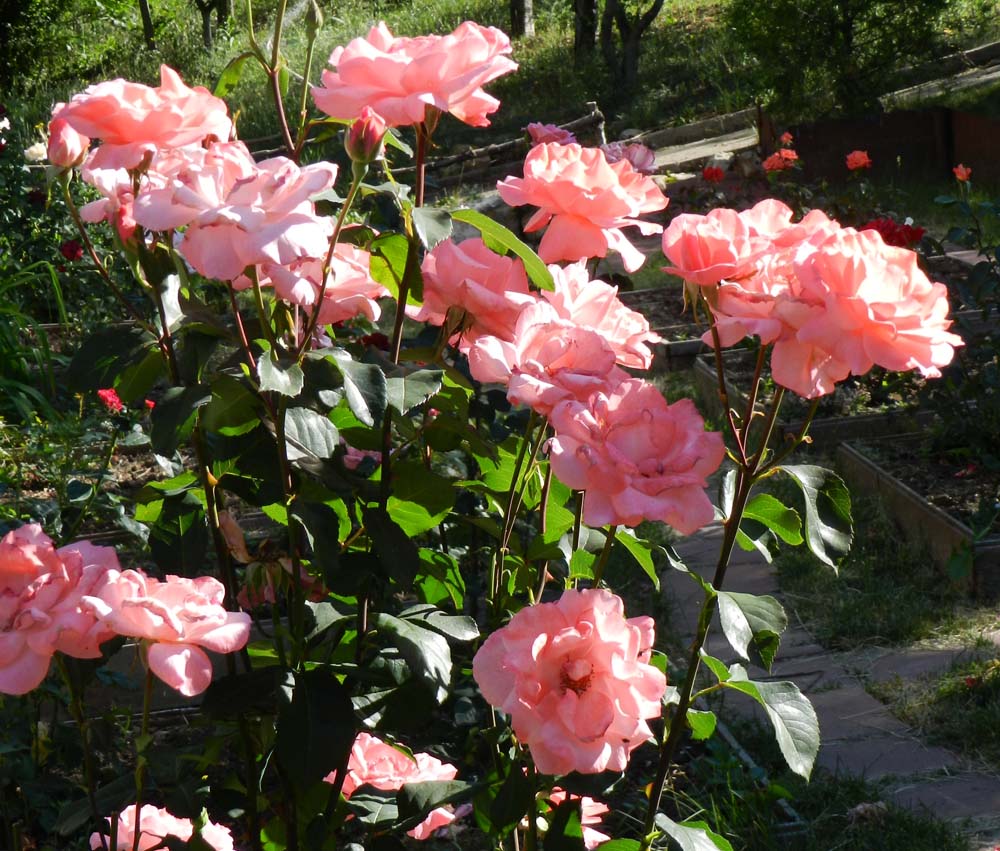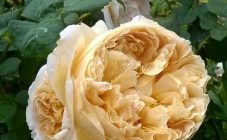Content:
The Queen Elizabeth Rose variety is considered by many to be one of the most beautiful in the world. In various encyclopedias, the plant is usually called grandiflora, and all because it combines the best qualities taken from the type of floribunda and tea rose. Rose Queen Elizabeth was bred by breeders in the second half of the 20th century, and since then it leaves almost no one indifferent.
History of creation and description of the variety
To obtain this plant variety, the scientists decided to cross the orange-red Floribunda Floradora and the dark pink hybrid tea Rise Shine. The experiments were carried out in the second half of the 50s of the 20th century, the result of which was an unexpected experimental type of roses, which was not similar to any other variety existing at that time.
Due to the fact that the Queen Elizabeth variety was endowed with the best qualities among all representatives of the plant, it gained recognition throughout the world in the shortest possible time.
The rose was represented by a rather large bush, with strong shoots that adorned the spectacular large inflorescences characteristic of hybrid tea varieties. As for the stems of this variety, they grow in bunches, like all representatives of the floribunda variety. It was the above characteristics that became the key features that prompted breeders to classify the Queen Elizabeth variety as the ancestor of a new subspecies - Grandiflora.
Rose Queen Elizabeth - main features and characteristics
About such an exquisite variety as Queen Elizabeth Stewart, growers respond very positively. And all because, thanks to her amazing beauty, she was repeatedly awarded prestigious awards and prizes at various world exhibitions.
In the process of growing, the culture is unpretentious, which makes it possible to breed it even for those gardeners who have no experience. The following distinctive features will help to determine the Queen Elizabeth variety:
- The structure of rose bushes is not sprawling, but vigorous, its height is 1 m. In the southern cultivation areas, the rose grows up to 1.5-2 m.
- Leafiness of shoots is average. This variety is distinguished not only by beautiful inflorescences, but also by decorative glossy foliage.
- The deep, deep pink flowers are 10 cm in diameter and shaped like a glass with a high center. Each bud consists of no more than 40 beautiful and delicate petals.
- As for the outer petals, they are slightly bent down and have a slight waviness. The closure of the inner petals is loose, with their help a loose core is formed.
The elongated buds have a light red color, but after they completely bloom, their shape changes, gradually changing from goblet to flat. They become slightly paler, acquiring a pale pink tint. Also, blossoming inflorescences have a delicate unobtrusive aroma.
Rose Queen Elizabeth Floribunda was appreciated by many breeding associations around the world (from Moscow to New York). Throughout its half-century history, this variety has received a huge number of high awards.
Recommendations for agricultural technology
High-quality and active development of culture directly depends on the correct selection of beds for planting seedlings. Frequent and strong drafts are unacceptable for a plant, therefore, you need to choose a site for planting very carefully. In addition to protection from strong through winds, the garden bed should be well lit by the sun's rays, because the degree of illumination affects the decorative properties of rose bushes.
Experienced flower growers recommend carrying out the procedure for planting roses in open ground in the spring season, the second half of May will be optimal. This variety prefers fertile, loose and well-drained soil. As for the landing algorithm, it looks like this:
- Before planting, it is necessary to pre-prepare the seedlings by shortening their shoots to at least 5 buds, and it is also necessary to cut off the weakened growths.
- The root system must be pruned, and then soaked for a day in a container with water, to which you need to add a biostimulator for root growth (Zircon).
- It is recommended to prepare the soil in advance - you need to dig it up, add a complex of mineral fertilizers and humus.
- When planting young plants directly, it is necessary to monitor the correct location of the root collar, which should be buried 15 cm into the ground.
- After the seedlings of the Queen Elizabeth rose have been planted, the soil needs to be compacted and abundant watering of the trunk circle must be done.
The Queen Elizabeth rose variety is very sensitive to excess moisture. Stagnation of groundwater also negatively affects the rose. But insufficient moisture can negatively affect the plant and even lead to its death. It is for this reason that watering should be moderate and regular.
One of the key aspects of crop care is the timely weeding and loosening of the soil under the bushes. It is also necessary to mulch the tree trunks using humus, wood chips or any other garden material for this.
The advantages and disadvantages of culture
It is worth noting that such a generally recognized culture as the Queen Elizabeth rose has practically no flaws. Unless you take into account the fact that it is very demanding on the level of soil moisture. The slightest hesitation in one direction or another can destroy the plant.
But as for the advantages, there are a number of them, namely:
- Rose bushes bloom for a very long period of time, which allows you to fully enjoy the splendor of the plant.
- Reproduction of the culture can be very successfully carried out by cuttings.
- The rose has a high immunity, thanks to which it is not afraid of any pests and diseases.
- The culture is highly frost-resistant and resistant to temperature extremes.
Due to its beauty, presentability and external nobility, the Queen Elizabeth rose, named after the Queen of England, has been popular for more than a dozen years. Rose Elizabeth continues to take part in international flower exhibitions, where she takes only prize-winning places. Having once planted such a plant in your area, it is simply impossible to part with it.














